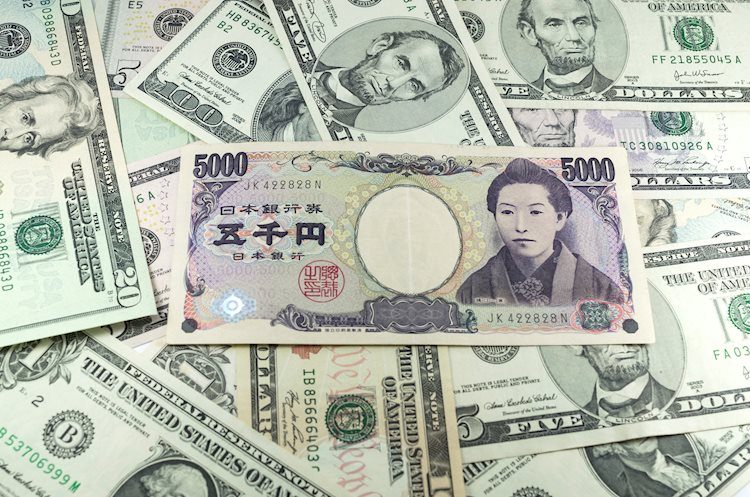- The US Dollar has resumed its upside trend and is testing mid-term highs at 153.90.
- The uncertain political and monetary scenario in Japan is hammering the Yen.
- The broader bias is positive but a bearish divergence warns of a potential correction.
The Dollar has resumed its broader bullish trend during Tuesday’s European session and is testing resistance right below 154.00 with all eyes on the US JOLTS Job Openings data.
The pair draws support from the image of a solid US economy, with all the other main economies slowing down. This endorses the idea that Fed easing will be only gradual, and keeps US Treasury yields and the USD buoyed.
In Japan, the uncertain political and monetary scenario after Sunday’s elections is weighing on the Yen. The Bank of Japan meets this week and is widely expected to keep interest rates on hold until the political context is clarified.
In the calendar today US Consumer confidence is expected to have improved in October, while the JOLTS Job Openings are seen declining moderately yet at levels consistent with a healthy labour market.
From a technical perspective, the bullish bias remains intact but the RSI shows a bearish divergence, warning that a correction might be ahead. Resistances are 153.90 and 155.10. Supports lie at 152.50 and 151.60.
Bank of Japan FAQs
The Bank of Japan (BoJ) is the Japanese central bank, which sets monetary policy in the country. Its mandate is to issue banknotes and carry out currency and monetary control to ensure price stability, which means an inflation target of around 2%.
The Bank of Japan embarked in an ultra-loose monetary policy in 2013 in order to stimulate the economy and fuel inflation amid a low-inflationary environment. The bank’s policy is based on Quantitative and Qualitative Easing (QQE), or printing notes to buy assets such as government or corporate bonds to provide liquidity. In 2016, the bank doubled down on its strategy and further loosened policy by first introducing negative interest rates and then directly controlling the yield of its 10-year government bonds. In March 2024, the BoJ lifted interest rates, effectively retreating from the ultra-loose monetary policy stance.
The Bank’s massive stimulus caused the Yen to depreciate against its main currency peers. This process exacerbated in 2022 and 2023 due to an increasing policy divergence between the Bank of Japan and other main central banks, which opted to increase interest rates sharply to fight decades-high levels of inflation. The BoJ’s policy led to a widening differential with other currencies, dragging down the value of the Yen. This trend partly reversed in 2024, when the BoJ decided to abandon its ultra-loose policy stance.
A weaker Yen and the spike in global energy prices led to an increase in Japanese inflation, which exceeded the BoJ’s 2% target. The prospect of rising salaries in the country – a key element fuelling inflation – also contributed to the move.
Read the full article here

